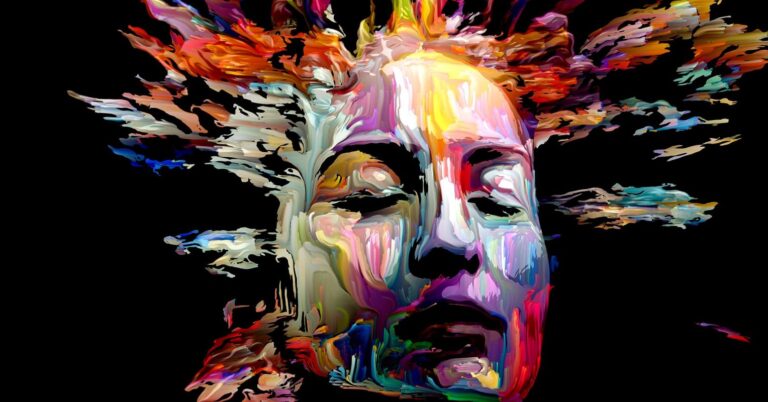
Anjan Chatterjee
Abstract expressionism and Robert Motherwell
In a recently published paper1, I asked, “Could Robert Motherwell have been as great an artist if he were not so articulate?” I proposed that the answer to this question is, no. While we might reasonably regard words and images as distinct forms of communication, they converge in important ways in expressionist art. The argument, illuminated by Motherwell, generalizes to the relationship between emotion, language, and aesthetic expression.
Motherwell was an American abstract expressionist. Throughout a rich career, he explored formal motifs and themes repeatedly, as seen in the Open and the Elegy to the Spanish Republic series. Like other expressionists, he wished to liberate form and color from their descriptive roles and deploy them to explore emotional depths. He was typically unsatisfied with his own attempts to capture his feelings in pictures. In an interview with Barbaralee Diamonstein2, he said, “I have never really solved any of them [serial paintings]. The day I can make an elegy that really satisfies me, then I’ll stop.”
Art, emotions, and language
Stepping back from Motherwell, how might we think about art, emotions, and language? We proposed that aesthetic experiences emerge from interactions between three large-scale neural systems—our sensory-motor, emotional-reward, and knowledge-meaning systems3. Aesthetic experiences link sensations with our emotion and reward systems. Beauty links sensory features to rewards, like the pleasure many experience from gazing at a sensuous curve.
Less straightforward are links to nuanced emotions. By nuanced emotions, I mean a granularity that distinguishes between similar emotions such as melancholy and mournfulness, which might otherwise be regarded more coarsely as “sad.” Such emotional nuances, their granularity, and experience of mixed-valence emotions4 give expressionists their power.
We previously argued that an emotion vocabulary helps us appreciate the impact of art and developed a taxonomy to characterize these effects on the viewer5. Similar to wine tasting, the way that highlighting notes of berries or vanilla allows a taster to notice those flavors within a complex experience, words for emotions enhance our sensitivity to nuanced distinctions.
Underlying discrete lexical descriptors that convey negative emotions that make us back away are continuous gradients in affective states that flow across anxiety, fear, horror, and disgust. For other events, we experience mixed emotions such as those that occur in bittersweet encounters. As parents encourage their children to “use your words,” a vocabulary allows us to notice nuanced emotions, rather than oblige others to interpret our feelings.
Nonverbal emotional expressions are notoriously unreliable in the messages they communicate. Our pupils dilate when we are angry and when we are afraid. Our skin gets sweaty when we are anxious and when we are excited. Our eyes tear up when we are sad and when we are joyous. Words, when used aptly, limit this ambiguity.
Intention and expression mismatches
The notion that language enhances sensitivity and emotion communication brings us back to Motherwell’s expressionist explorations. Motherwell appraised his artwork and judged whether what he put on canvas or paper matched the emotional state he was trying to convey. He says, “So you start with an approximation, and ultimately by trial and error, you reach it if you’re lucky.”6
I suggest that, when unsatisfied with a painting, Motherwell was reacting to a mismatch between his felt emotions and the emotions expressed in the paintings. His sensitivity to nuanced mismatches, even when this sensitivity seems intuitive in the moment, rests on a store of fine-grained emotional categories supported by language. Once the categories are established and one’s emotional-perceptual acuity is sensitized, matches and mismatches are recognized and the adequacy of an intention-to-expression mapping are better appreciated.
The recognition of a mismatch likely draws on well-recognized neural systems of predictive coding7 that resolves errors as a mechanism of learning. Thus, even if emotional expressive forms are not reducible to language, refined categories aided by language help detect subtle incongruities—which is why so many artists are unsatisfied with their work and keep pushing themselves to get it right as they repeat motifs. On this account, it is no surprise that Motherwell said, “I in my life have never met a first-rate painter who was not highly intelligent and extremely articulate in his own terms.”8
Words give form to affective states. To convey subtle emotional expressions, words matter—in images and, especially, in expressionist art.


















+ There are no comments
Add yours